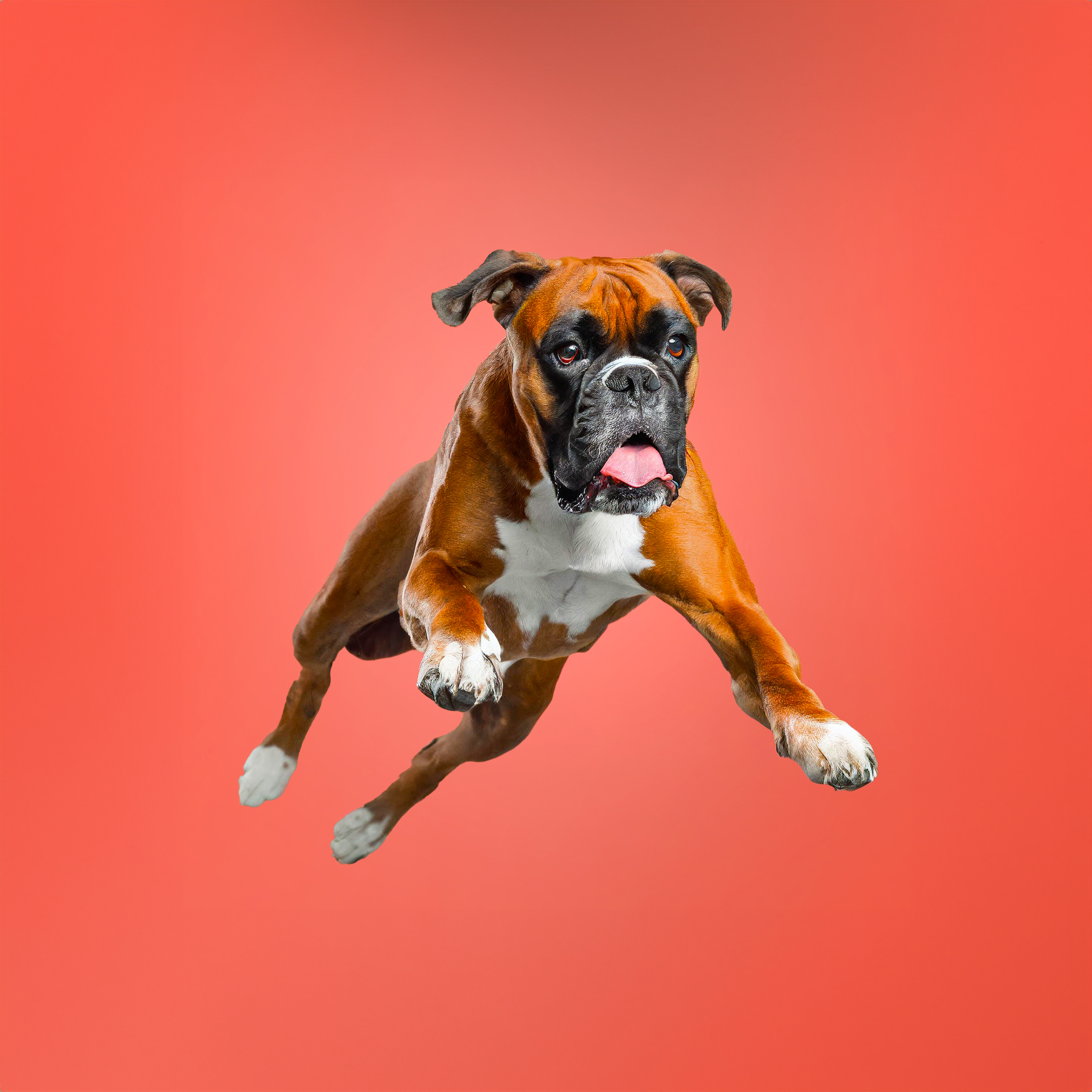Brachycephaly
Similarly to Pug, Boxer is brachycephalic, which means it has a short nose and narrow nostrils. That is why these important members of the family are prone to breathing problems and snoring as the temperature rises. Their breathing problem worsens with weight gain. That is why eating healthy food and monitoring weight is of particular importance to prevent the problem.
Due to the brachycephalic structure of the skull, it is especially dangerous to leave our beloved friends indoors for long periods. In a closed environment, Boxers have difficulty breathing and develop convulsions. High air temperature and direct sunlight can cause a large amount of mucus to accumulate in the nasal cavity of our companion animals and cause breathing difficulties.
Allergy
Boxers often suffer from skin infections caused by an allergic background. Symptoms caused by food or allergens such as dust and mold are easily noticed. As usual, the symptoms are manifested in excessive fur loss along with itching of the skin. To avoid complications related to skin infections, we recommend using hygiene products specially designed for furry friends.
Also, if possible, it is recommended to do an allergy test for your companion animal and determine with maximum accuracy which products it is allergic to. This will allow you to remove all the ingredients from the diet that cause allergies in your cherished Boxer.
Eye Concerns
Insufficient intake of water can cause dry eyes. Difficulty producing tears leads to eye irritation and vision problems. The climate is often seen as a provoking circumstance for eye problems. For instance, if you plan to spend the summer with your furry friend in a seaside town, it is advisable to take special care and keep your companion out of the heat as much as possible.
Boxer’s eyes are also particularly sensitive to dust. That is why we recommend that you refuse to walk with your companion animal in windy weather. Please pay special attention to early symptoms of eye disease such as redness and tearing. It is advisable to visit a veterinarian as soon as these symptoms appear. As a competent parent, it is important to keep in mind that daily eye care and daily cleaning with special hygiene products are essential for disease prevention.
Hip Dysplasia
Hip dysplasia is a medical term that refers to a partial or complete loss of the hip joint. Hip dysplasia can cause bone wear and tear and pain associated with this process. Most companion animals have hip dysplasia from birth. If hip dysplasia is diagnosed at an early stage, you can easily correct the problem. In other cases, surgery may be needed to reposition the bones.
Although genetics play an important role in the development of this disease, maintaining a healthy weight is especially important to reduce stress on the joints. Daily walking and swimming will help to form the muscles around the pelvis and maintain their strength.
Aortic Stenosis
This defect, characteristic of the Boxer breed, forces the heart to work harder to supply blood to the body. Left untreated, aortic stenosis can lead to heart palpitations and even sudden death. As usual, the veterinarian makes the diagnosis based on a proper observation of the companion animal, after a cardiological examination of the heart.
Cardiomyopathy
Cardiomyopathy is a heart disease that causes thickening of the heart muscle, especially the left ventricle. The disease may cause heart failure and other cardiovascular problems.
Veterinarians often use medication to manage the symptoms caused by cardiomyopathy and slow the progression of the disease. A comprehensive treatment plan and continuous heart health monitoring ensure the health of your important family member. However, cooperating with a nutritionist and following a specialized diet based on his recommendation is no less important for heart health.
Lymphoma
Lymphoma is a disease that causes damage to the cells of the lymphatic system. During the disease, lymphocytes behave like tumor cells, multiply uncontrollably, and accumulate in the lymph nodes. Since lymphocytes circulate throughout the body, tumors may develop in other areas of the body besides the lymph node.
In addition to genetic factors, lymphoma can also be caused by bacterial and viral infections. Temperature rise, weight loss, excessive sweating, fatigue, and difficulty breathing are the symptoms that you should pay special attention to. Make an appointment with the vet as soon as you notice any symptoms and make sure your important family member’s health is not at risk.
Epilepsy
Epilepsy is a disease of the central nervous system, which causes disturbances in the activity of nerve cells in the brain. Epileptic episodes usually last for a few seconds or minutes. Epilepsy prevention measures include maintaining a consistent routine and minimizing stress. However, remember that timely veterinary attention and initiation of appropriate medical treatment are the best ways to manage this disease.

